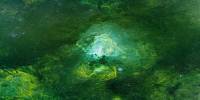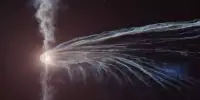According to research published on February 21 in the journal Nature Communications, the current generation of Mars rovers may have difficulty confirming any evidence of ancient life on the Red Planet because their scientific equipment isn’t up to par (opens in new tab).
The Atacama Desert in Chile, one of the oldest and driest deserts on Earth, and a geological analog to the ancient sites on Mars that two NASA rovers are currently investigating served as the site for the study’s sedimentary rocks. The “dark microbiome,” a previously unidentified mixture of ancient and contemporary microorganisms, has been found to live in Red Stone’s clays, according to the same study team.
The team examined samples from Red Stone using four instruments that are on current or future Mars rovers and discovered that they were not capable of detecting organic material. Only genetic sequencing, which can only be performed in a facility on Earth, was able to identify any traces of microbial life in the samples, and even then, they were hardly perceptible.
The researchers came to the conclusion that any ancient organic material and microorganisms found in the Martian rock record may be “hard, if not impossible,” to find in their present locations. The latest study emphasizes that sending samples back to Earth for DNA analysis is the only way to conclusively demonstrate signs of life on Mars, barring the use of more sophisticated rovers.
The Center of Astrobiology (CAB) in Madrid’s research scientist Armando Azua-Bustos, who is the main study author, said in a statement that the possibility of getting false negatives in the search for life on Mars emphasizes the need for more potent tools (opens in new tab).
Therefore, researchers have two options: either they create sensitive and sophisticated instrumentation for Mars rovers, or they return samples to Earth. According to the writers, each choice has advantages and disadvantages.
A statement from study co-lead author and planetary scientist Alberto G. Fairén(opens in new tab), an astrobiologist at Cornell University, said, “You need to decide whether it’s more advantageous having limited capability for analysis on the surface of Mars to interrogate a wide variety of samples or having limited samples to be analyzed with the wide variety of state-of-the-art instrumentation on Earth.
Currently, Mars has three rovers. The clearest proof yet that there is water and waves on Mars was recently discovered by NASA’s Curiosity rover, which first touched down in Gale Crater in 2012. In search of evidence of ancient microbial life preserved in the geological record, NASA’s Perseverance rover has been investigating an ancient river delta at Jezero Crater since 2021. Although the difficult mission is still in its early phases, the rover is presently preparing samples that will be collected by a spacecraft and returned to Earth for in-depth analysis.
China’s Zhurong rover, which landed in the Utopia Planitia plain and swiftly discovered signs of water, joined Curiosity and Perseverance in May 2021. That robot, though, isn’t looking for evidence of prehistoric life.
The ExoMars project, which has been delayed, will finally take off in 2028 and land its Rosalind Franklin rover in the clay-rich plain of Oxia Planum.
“This European rover will contain a drill with the unprecedented potential of reaching down to a depth of 2 meters (6.5 feet) to analyze sediments better protected against the harsh Martian surface conditions,” Fairén said. If biosignatures are better maintained at depth, as we anticipate, deep samples will contain a greater variety and abundance of biosignatures.













